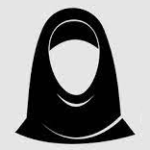Training & Coaching

In the business world, good etiquette means acting professionally and showing respect to colleagues and clients.
Our training program “Practitioners in Protocol and Business Etiquette” offers a unique opportunity to develop your professional skills and social interaction in the workplace.
Self and organizational representation: How to build a positive image of oneself and the organization in various contexts and environments.
Meeting management and dealing with people: Understanding how to effectively manage meetings and interact with team members.
Understanding body language: Effective analysis of body language and understanding through it.
Diffusing difficult situations: Strategies for diffusing difficult situations and resolving conflicts effectively.
Oral, written, and digital communication: Developing communication skills in all situations, whether oral, written, or digital.
Day 1 : Introduction to protocol and business etiquette:
Day 2: Present yourself professionally:
Day 3: Communication language in the real world:
Day 4: Communication language in the virtual world
Day 5: Protocol language:
It was a very nice and enriching course, thank you






I liked the content and the professor’s style is beautiful and comfortable. thanks a lot.






Thank you, the course is important, enjoyable and not boring.






Because body language and non-verbal communication constitute approximately 70% of our conversations and communication with others daily, I joined the useful courses on the ERSA platform.





